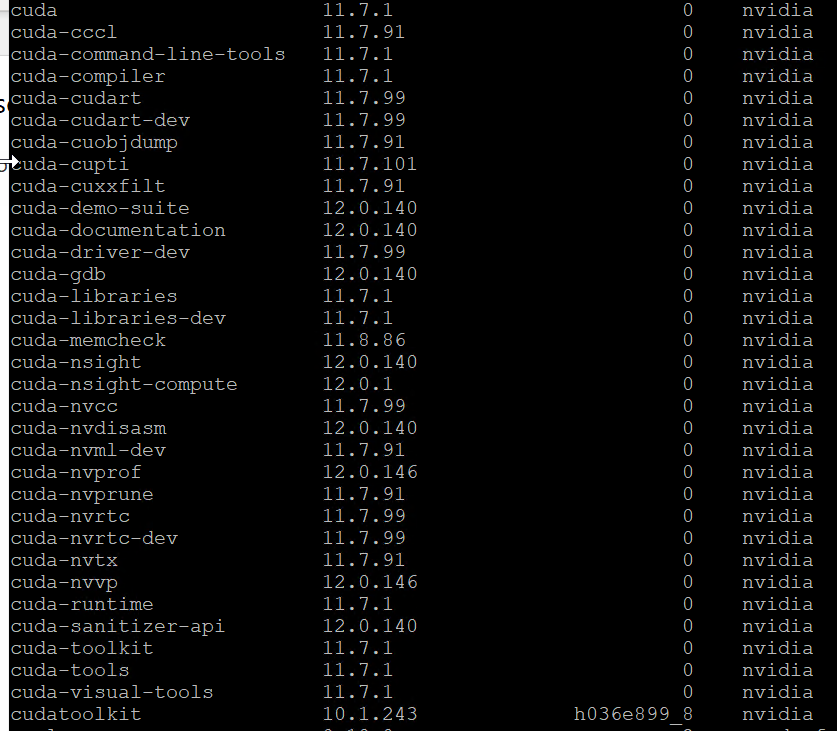

- #Nvidia cuda toolkit adobe premiere install
- #Nvidia cuda toolkit adobe premiere driver
- #Nvidia cuda toolkit adobe premiere pro
In the following, "CUDA Toolkit" (standalone, what you would install outside of Python right on your system) and cudatoolkit (conda) are different!

The conda install command for Pytorch will need the conda install parameter "cudatoolkit", while tensorflow does not need the parameter.
#Nvidia cuda toolkit adobe premiere driver
Cuda needs to be installed in addition to the display driver unless you use conda with cudatoolkit or pip with cudatoolkit.Selecting a region changes the language and/or content on. The GPU requirement for this is very low, and any modern video card with a small amount of VRAM is adequate. When the Hardware Accelerate option is disabled, After Effects processes all of that on the CPU, but the GPU can accelerate this process, especially color management. Specifically, View > Use Display Color Management, when a working space color profile has been enabled for the project. Once After Effects renders the frame, it next prepares that frame for display, taking into account the screen resolution, scaling, overlays like guides and layer handles, and color management. The Hardware Accelerate Composition, Layer, and Footage Panels option in Preferences > Display is enabled by default, and uses OpenGL to prepare the rendered frames for screen display during previews/playback.If an effect is not faster to render on the GPU than on the CPU, you lose performance time while copying the frames back and forth. This is an opportunity to point out that in a mixed CPU and GPU rendering environment, there is a performance cost to moving frames between CPU and GPU memory. But rendering motion blur on the GPU requires it to be aware of the transforms and quality, so these calculations are done on the GPU when motion blur requires it. Layer transforms and layer quality require layer motion blur to be enabled because by themselves, they do not render significantly faster on the GPU.

Also, some of them are useful on non-VR footage because they are wholly new to After Effects, like VR Chromatic Aberrations. Their advantage for VR over other effects is that they are seamless, and they wrap the ends of the VR image together. We recommend a GPU with high VRAM, 4GB or better, to use these effects. Unlike the other effects, they do not currently have a CPU fallback.
#Nvidia cuda toolkit adobe premiere pro
Use Frame.io with Premiere Pro and After Effects.Collaboration in Premiere Pro and After Effects.Collaboration: Frame.io, and Team Projects.Creative Cloud Libraries in After Effects.Working with After Effects and other applications.Using the GoPro CineForm codec in After Effects.Rendering and exporting still images and still-image sequences.Automated rendering and network rendering.Export an After Effects project as an Adobe Premiere Pro project.Preview changes to 3D designs real time with the Mercury 3D engine.Construct VR environments in After Effects.Use expressions to edit and access text properties.Syntax differences between the JavaScript and Legacy ExtendScript expression engines.Compositing and transparency overview and resources.Setting, selecting, and deleting keyframes.Animating Sketch and Capture shapes using After Effects.Managing and animating shape paths and masks.Animation, Keyframes, Motion Tracking, and Keying.Cameras, lights, and points of interest.Remove objects from your videos with the Content-Aware Fill panel.Use Offset Paths shape effect to alter shapes.Shape attributes, paint operations, and path operations for shape layers.Paint tools: Brush, Clone Stamp, and Eraser.Overview of shape layers, paths, and vector graphics.Replace images and videos in Motion Graphics templates and Essential Properties.Work with Essential Properties to create Motion Graphics templates.Use expressions to create drop-down lists in Motion Graphics templates.Work with Motion Graphics templates in After Effects.Examples and resources for text animation.Formatting paragraphs and the Paragraph panel.Formatting characters and the Character panel.Detect edit points using Scene Edit Detection.Importing and interpreting footage items.Importing and interpreting video and audio.Importing from After Effects and Adobe Premiere Pro.View detailed performance information with the Composition Profiler.Precomposing, nesting, and pre-rendering.Startup and Repair in Preferences (Beta).


 0 kommentar(er)
0 kommentar(er)
